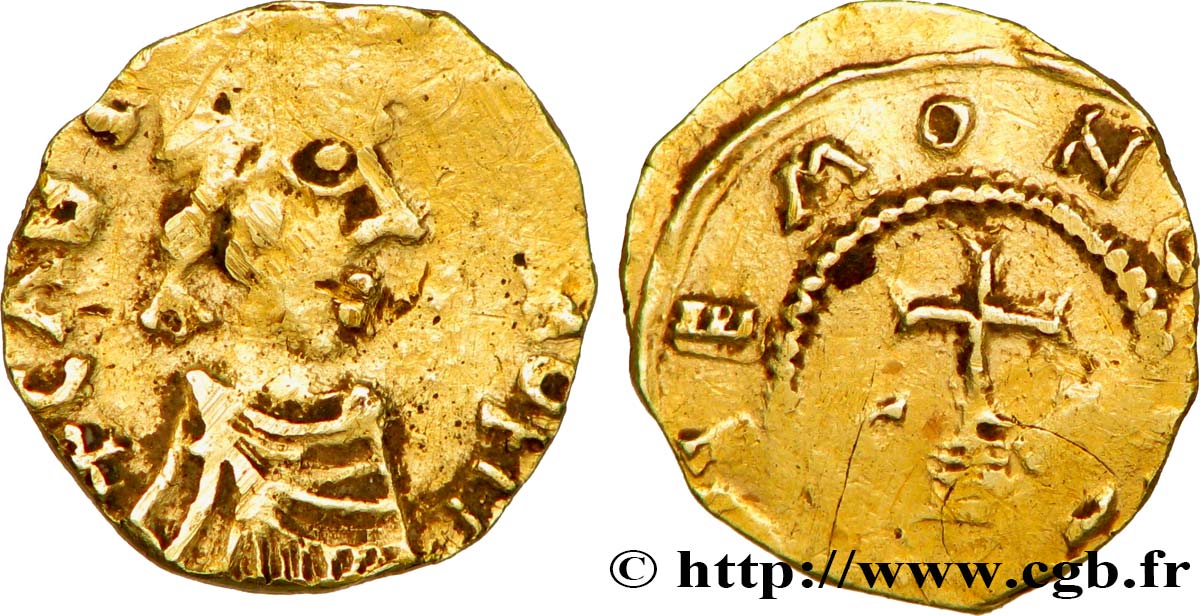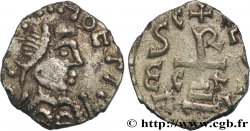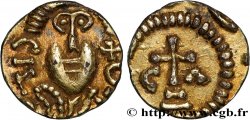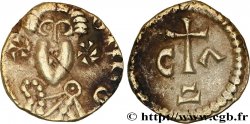bmv_228020 - CHALON-SUR-SAÔNE (CABILONNUM) - Saône-et-Loire Triens, monétaire ABBONE
Not available.
Item sold on our e-shop (2015)
Price : 1 000.00 €
Item sold on our e-shop (2015)
Price : 1 000.00 €
Type : Triens, monétaire ABBONE
Date: VIIe siècle
Mint name / Town : 71 - Chalon-sur-Saône
Metal : gold
Diameter : 13 mm
Orientation dies : 6 h.
Weight : 1,23 g.
Rarity : R3
Coments on the condition:
Triens en bon or, sur un flan un tout petit peu court et légèrement volé. Le droit est centré et presque complet malgré une faiblesse de frappe sur la légende devant le front. Le revers est de frappe vigoureuse, mais un eu décentré avec une partie de la légende hors flan
Catalogue references :
Obverse
Obverse legend : +CABI[L-ON]NO FIT.
Obverse description : Buste à droite, diadème de perles sommé d’un croissant et attaché par trois rubans terminés par des globules ; manteau avec anneau d’attache à l’angle gauche et globules à l’angle droit.
Reverse
Reverse legend : [ABBO]NE MO.
Reverse description : Croix latine sur deux degrés, accostée de CA, dans un diadème de perles avec un anneau centré.
Commentary
Ce type de revers est très proche du B. 1151 pour ABBO, avec la légende ABBONEMO qui commence à 1 heure. Notre triens ne correspond qu’à ce type, repris sous le n° 103 par Ponton d’Amécourt, mais remet en question la lecture du A initial. Sur cet exemplaire, la légende (...)NE MON(...) laisse penser que la légende commence à 6 heures avec un nom de monétaire très court !
S’il s’agit bien d’une légende commençant à 1 heure, le nom du monétaire commencerait par un N et non par un A comme l’on supposé les auteurs à partir d’un dessin où cette lettre est en bord de flan...
Le triens B. 1151 et le n° 103 de Ponton d’Amécourt sont vraisemblablement la même monnaie. L’une est classée en 3e groupe par Belfort et en 4e groupe par Ponton d’Amécourt (?).
S’il s’agit bien d’une légende commençant à 1 heure, le nom du monétaire commencerait par un N et non par un A comme l’on supposé les auteurs à partir d’un dessin où cette lettre est en bord de flan...
Le triens B. 1151 et le n° 103 de Ponton d’Amécourt sont vraisemblablement la même monnaie. L’une est classée en 3e groupe par Belfort et en 4e groupe par Ponton d’Amécourt (?).








 Report a mistake
Report a mistake Print the page
Print the page Share my selection
Share my selection Ask a question
Ask a question Consign / sell
Consign / sell
 Full data
Full data
